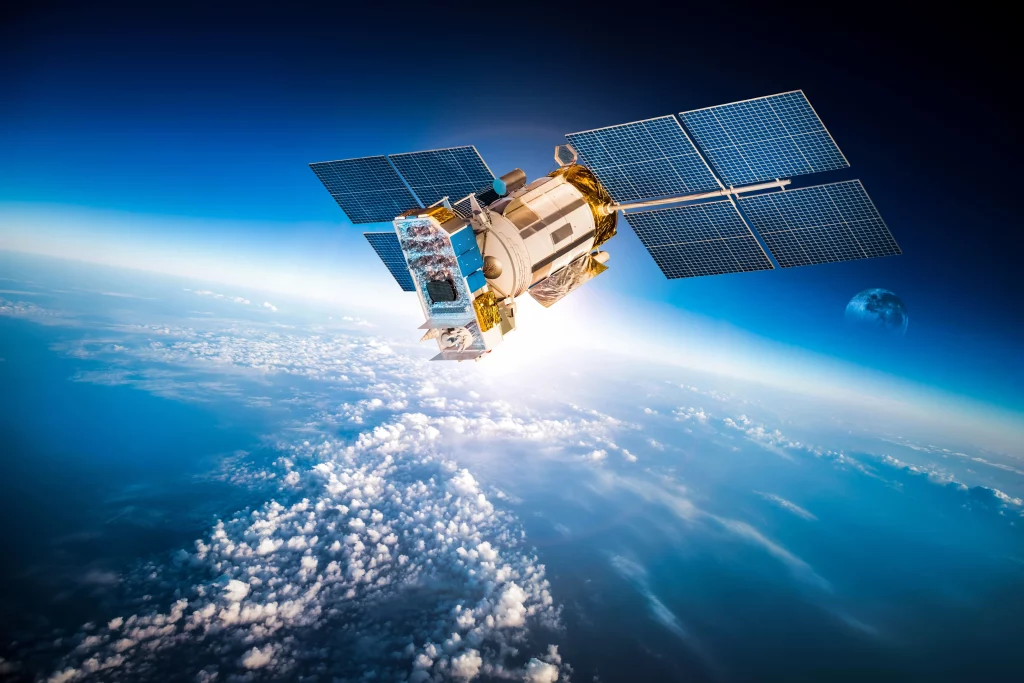In an increasingly connected world, satellite imaging technology has played a crucial role, offering us panoramic and detailed views of the Earth. In this context, satellite visualization applications emerge as powerful tools, providing not only the pleasure of visual exploration, but also valuable information for various applications. This article aims to explore the most sophisticated applications and their functionalities, delving into the universe of satellite images that allow us to see our own city from previously unimaginable angles.
With the evolution of technology, these applications have become increasingly accessible and easy to use. Now, with just a few clicks on our devices, we can get detailed views of any location on the planet. From topographical analysis to urban planning, the possibilities are as vast as they are intriguing. Let's explore some of these possibilities, highlighting applications that have revolutionized the way we interact with the space around us.
Exploring the World in Detail
Under this technological landscape, exploring cities, forests, deserts and oceans in never-before-seen detail is a tangible reality. Satellite viewing apps are not just windows into remote places, they are also powerful tools for us to better understand our environment.
Google Earth
Google Earth is undoubtedly the giant in the field of satellite viewing. It offers an intuitive interface and a vast library of satellite images, aerial images and 3D models. With Google Earth, you can travel to any corner of the world and see incredible details of cities, land and buildings. The “Voyager” feature allows you to participate in guided tours, learning about different cultures and natural landmarks around the globe.
The 'Street View' feature takes the experience a step further, allowing users to explore city streets as if they were there. Google Earth is more than an app; it is a bridge to connect people and places, making the world more accessible and understandable for everyone.
Satellite Map
Satellite Map is another powerful tool that provides real-time satellite images. This application is known for its accuracy and image detail. Ideal for geography enthusiasts and professionals who require accurate geospatial information, Satellite Map offers a clear, up-to-date view of the globe.
In addition to high-resolution images, Satellite Map provides valuable data on weather conditions, traffic patterns and other geographic phenomena. Its easy-to-use interface and ability to provide real-time information make Satellite Map an indispensable tool for those looking to explore the world from above.
Zoom Earth
Zoom Earth brings a different perspective to viewing satellite images. This app stands out for providing satellite images in near real time, which is perfect for monitoring weather conditions and natural disasters. Zoom Earth's ability to provide frequent updates makes it a valuable tool for journalists, scientists and emergency management officials.
Zoom Earth isn't just about observing; it allows users to better understand the world they live in by providing up-to-date information about natural and human phenomena. Whether you're checking the progression of a storm or the impact of a current event, Zoom Earth is a window into the dynamic world we live in.
NASA World Wind
NASA World Wind is a platform that allows users to explore Earth through an interactive 3D environment. Developed by NASA, this app is not just a visualization tool; it is a portal to learning and discovery. World Wind combines high-resolution satellite imagery with detailed geographic information, enabling in-depth exploration of our planet.
The platform is highly customizable, allowing developers to create their own applications using the World Wind toolkit. For educators, researchers, and enthusiasts, NASA World Wind is an invaluable tool for visualizing our planet and understanding the complex systems that make it up.
ArcGIS Earth
Esri's ArcGIS Earth is a robust tool for map visualization and geospatial analysis. Designed to be easy to use yet powerful in functionality, ArcGIS Earth allows users to explore a wide variety of geospatial data. If you are a professional working with GIS or someone interested in geography, this app offers an interactive platform to visualize and understand data.
With ArcGIS Earth, you can integrate data from multiple sources, including satellite imagery, topographic data, and demographic information. Whether for professional or personal use, ArcGIS Earth is a versatile tool that makes the world of geospatial data accessible to everyone.

Features and Possibilities
These apps are not just windows to view our world, but also powerful tools for analysis and understanding. The functionalities go beyond simple observation, offering features such as distance measurement, terrain analysis, urban planning and environmental monitoring. The ability to overlay different types of data opens up a world of possibilities for research, education, and informed decision-making.
FAQ
Q: Are satellite imagery apps updated in real time? A: Some applications, such as Zoom Earth, provide images in near real-time. However, the update frequency may vary depending on the application and region observed.
Q: Can I use these apps for professional purposes? A: Yes, many of these applications, such as ArcGIS Earth and Satellite Map, are highly respected by professionals in various industries for geospatial analysis, urban planning, and environmental monitoring.
Q: Do I need technical knowledge to use these apps? A: While some apps, like NASA World Wind, offer advanced functionality for developers and researchers, most apps are designed to be intuitive and accessible to all users, regardless of their technical skill level.
Conclusion
The ability to see our city and the world from satellite images has transformed the way we live, work and learn. The applications discussed in this article are just the tip of the iceberg in terms of what is possible with satellite viewing technology. As we continue to explore and understand our planet, these tools will be invaluable in unlocking Earth's secrets and facilitating a deeper understanding of the place we call home.





